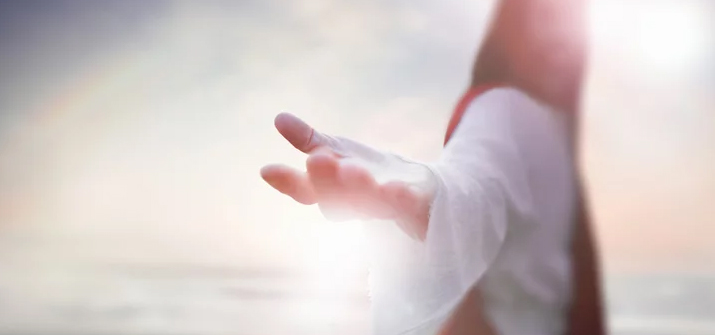By Omar Luther King
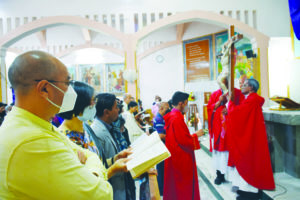 We live in a world in which we give much importance to the things we see, leaving us impervious to spiritual truths and facts because we can neither see them nor prove their validity. On Easter Sunday or Resurrection Sunday, the essence of Easter has to be understood in the context of what happened two thousand years ago, as told to us by those who lived in that age. The traditional beliefs and practices have stood the test of time and they have to be preached and practiced by those who have experienced the truth of the invisible and inspiring omnipresence of the Almighty they believe in and worship.
We live in a world in which we give much importance to the things we see, leaving us impervious to spiritual truths and facts because we can neither see them nor prove their validity. On Easter Sunday or Resurrection Sunday, the essence of Easter has to be understood in the context of what happened two thousand years ago, as told to us by those who lived in that age. The traditional beliefs and practices have stood the test of time and they have to be preached and practiced by those who have experienced the truth of the invisible and inspiring omnipresence of the Almighty they believe in and worship.
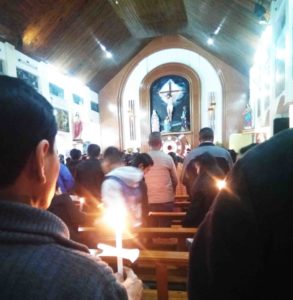 Easter in Shillong
Easter in Shillong
I was in Shillong as a Christian missionary for a decade (1993 to 2003) and now in Delhi and, oh, the difference! Not many here know when the Holy Week comes and goes because Christians observe the week in a solemn fashion. While there in Meghalaya, I found that Palm Sunday and the whole week that followed in the week were observed with great earnesty, as the holiest week of the year. Beginning with the Last Supper on Maundy Thursday and the death of Jesus on the cross on Good Friday, the Christians observe fasting as a way of renunciation of earthly comforts. Special sermons on salvation and partaking in the Lord’s Supper also mark the celebration of the Holy Week which culminates on Easter.
 The Christians across the state begin Easter celebrations with midnight Mass and special prayers. Midnight services, with special readings from the Bible are held in several churches in the state. Oh, how I miss all that here.
The Christians across the state begin Easter celebrations with midnight Mass and special prayers. Midnight services, with special readings from the Bible are held in several churches in the state. Oh, how I miss all that here.
History
On the first Easter in the history of mankind after his shameful death on the cross, Jesus appeared for the first time in the garden of Jerusalem to Mary Magdalene and the second time on the same day to other women. The third appearance of Christ was not to the eleven disciples but to two other followers of his from Emmaus. It may be that the reason for this was to prevent the future leadership of the Church from giving undue attention to the inner circle of disciples.
 As those two people going to Emmaus returned to Jerusalem by moonlight, Christ made his fourth appearance – this time to Peter. As the two arrived to tell the disciples about their having seen Christ, the eleven in Jerusalem greeted them, saying, ‘It is true! The Lord has risen and has appeared to Simon’ (Luke 24:34). It is most likely that Christ confirmed his love for Peter and let him know that he had accepted his repentance after his grievous fall.
As those two people going to Emmaus returned to Jerusalem by moonlight, Christ made his fourth appearance – this time to Peter. As the two arrived to tell the disciples about their having seen Christ, the eleven in Jerusalem greeted them, saying, ‘It is true! The Lord has risen and has appeared to Simon’ (Luke 24:34). It is most likely that Christ confirmed his love for Peter and let him know that he had accepted his repentance after his grievous fall.
 The news of the resurrection of Christ had greatly disturbed the political and religious leaders of that time. On that eventful Sunday evening, the disciples met secretly behind closed doors for security, fearful that the Jewish elders would try to kill them, as they had their master. Thomas, for some reason, was absent. In Jesus is found the harmony we all need to live with others daily, according to the apostolic command: ‘If it is possible, as far as it depends on you, live at peace with everyone’ (Romans 12:18). The disciples, on account of their weak faith, were not prepared for this peace. They did not pay much attention to his words nor did they heed the witness of the women because they believed females to be particularly prone to delusions.
The news of the resurrection of Christ had greatly disturbed the political and religious leaders of that time. On that eventful Sunday evening, the disciples met secretly behind closed doors for security, fearful that the Jewish elders would try to kill them, as they had their master. Thomas, for some reason, was absent. In Jesus is found the harmony we all need to live with others daily, according to the apostolic command: ‘If it is possible, as far as it depends on you, live at peace with everyone’ (Romans 12:18). The disciples, on account of their weak faith, were not prepared for this peace. They did not pay much attention to his words nor did they heed the witness of the women because they believed females to be particularly prone to delusions.

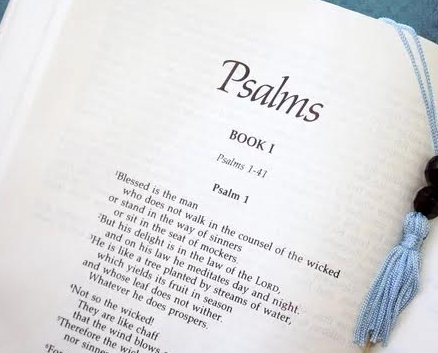 Considering these circumstances, Christ censured them gently, saying: ‘Why are you troubled, and why do doubts rise in your minds? Look at my hands and my feet. It is myself! Touch me and see; a ghost does not have flesh and bones, as you see I have’ (Luke 24:38-39). This is one of the few instances where Christ valued sensory proof as confirmation of fact, and he affirmed it in the most important of events, that is, his resurrection.
Considering these circumstances, Christ censured them gently, saying: ‘Why are you troubled, and why do doubts rise in your minds? Look at my hands and my feet. It is myself! Touch me and see; a ghost does not have flesh and bones, as you see I have’ (Luke 24:38-39). This is one of the few instances where Christ valued sensory proof as confirmation of fact, and he affirmed it in the most important of events, that is, his resurrection.
The first day of that historic week was hallowed by the resurrection of Christ and by the five appearances he made on it. It is no wonder that his followers came to honour Sunday, for it was on that day that Christ instituted a new order, the foundation for the Church, and a new world in a spiritual sense. He consecrated this day for his followers as a memorial of the new creation, which came into being through his atoning death. As a result of this, Sunday 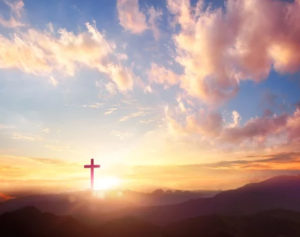 took the place of the Jewish Sabbath that commemorated the completion of the original Creation. What further supports this conviction is the fact that Christ was absent from his followers an entire week before he reappeared for the sixth time on the following Sunday. And to top it all, the outpouring of the Holy Spirit at the birth of the Christian Church took place on Sunday, coinciding with the Jewish Feast of Pentecost.
took the place of the Jewish Sabbath that commemorated the completion of the original Creation. What further supports this conviction is the fact that Christ was absent from his followers an entire week before he reappeared for the sixth time on the following Sunday. And to top it all, the outpouring of the Holy Spirit at the birth of the Christian Church took place on Sunday, coinciding with the Jewish Feast of Pentecost.
While observing these rituals, one must consider that spiritual truths cannot be proved like we prove that 2 and 2 are four and not five, six, like we do in mathematics. Our respective religious beliefs take us closer to the existence of the Almighty and in no way create controversy or ill will between those who believe in the living Christ or those who believe in different gods.
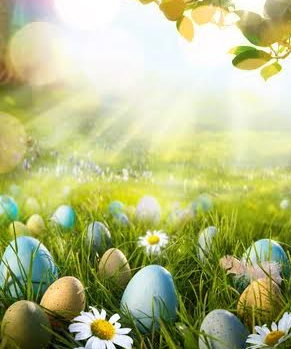 (The author is a Delhi-based writer and contributor at The Shillong Times)
(The author is a Delhi-based writer and contributor at The Shillong Times)
